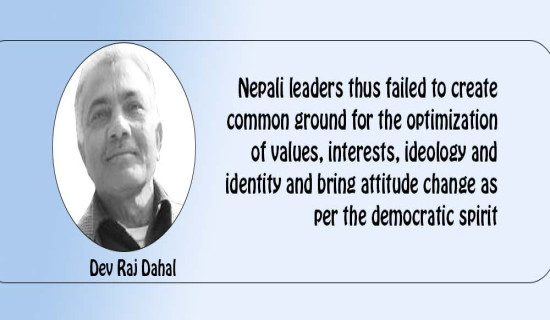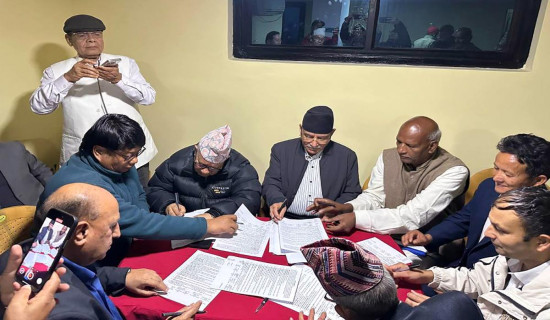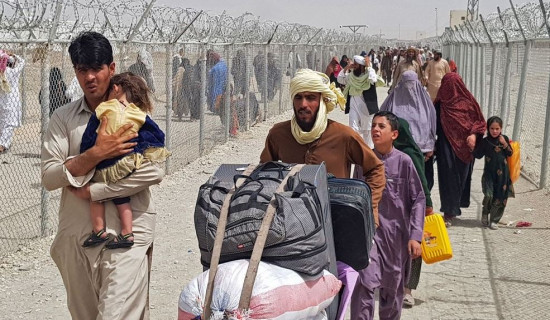- Sunday, 2 November 2025
Health Priorities: Concern Of Future
The COVID-19 pandemic exposed vulnerabilities in global health systems, compelling a reevaluation of priorities to build resilience, equity, and sustainability. All nations must move forward to address these priorities to ensure healthier futures for their population. Primary healthcare (PHC) forms the foundation of health systems but remains underfunded in many regions. The investment in PHC only can ensure early detection of diseases, continuity of care, and equitable access. However, it is essential that community health workers, digital health platforms, and telemedicine must be integrated into PHC systems to improve outreach and efficiency.
Non communicable diseases (NCDs), such as diabetes, cardiovascular diseases, and cancer, now account for over 70 per cent of global deaths annually. These conditions are preventable with lifestyle modifications, early interventions, and public health campaigns. Governments must prioritise reducing risk factors like tobacco use, unhealthy diets, and physical inactivity while not undermining about promoting mental health. Disparities in healthcare access remain stark. It is pity to notice, in this century, that vulnerable populations, including those in low-income settings, women, and ethnic minorities, often face systemic barriers. Therefore, policies promoting universal health coverage, community-based healthcare, and social safety nets can bridge this gap and reduce inequalities.
Grave situation
It is the grave situation that NCDs now dominates global health concerns, infectious diseases like malaria, tuberculosis, and emerging zoonotic infections still remain threats. Hence, strengthening surveillance systems, enhancing vaccine accessibility, and fostering international collaboration are crucial to combat these diseases. Moreover, climate change has direct and indirect impacts on health, from heat-related illnesses to vector-borne diseases. Easy to talk and easier to carry out is the sustainable health systems that prioritise environmental conservation may mitigate these effects. Although less used but renewable energy in healthcare facilities, waste reduction and management, and community resilience programs are necessary to align health goals with climate action.
Artificial intelligence, genomics, and wearable devices are transforming healthcare. However, equitable access to these innovations remains a challenge. Governments and private sectors should collaborate to make these advancements affordable and accessible. The pandemic has taught us the importance of preparedness and cooperation. Global health security mechanisms must focus on early warning systems, rapid response, and funding for research and development. A well-coordinated global approach can help avert future crises such COVID 19.
Nepal has made commendable progress in health indicators over the past decades. However, critical gaps persist, necessitating a reevaluation of its health priorities to ensure equity, resilience, and sustainability. Nepal’s focus on primary healthcare (PHC), particularly through the Community-Based Health Insurance Program and Basic Health Service Package (BHSP), has expanded access to care. It has initiatives like the deployment of Female Community Health Volunteers (FCHVs) have proven transformative. However, PHC systems are strained due to underfunding, inadequate infrastructure, and insufficient human resources in remote areas. It is therefore, strengthening PHC with digital tools, better staffing, and community engagement becomes essential.
Maternal and child health remains a priority, with Nepal achieving remarkable reductions in maternal and under-five mortality. Yet, disparities in rural and urban settings persist. However, programmes like Safe Motherhood need more targeted interventions addressing cultural barriers, infrastructure deficits, and skilled birth attendant shortages in hard-to-reach areas. The epidemiological transition in Nepal has led to a surge in NCDs, including cardiovascular diseases, diabetes, and cancer. Despite this, the healthcare system remains predominantly focused on communicable diseases. A strategic pivot toward NCD prevention, early detection, and affordable treatment is crucial. Public health campaigns promoting healthy lifestyles and policies addressing environmental pollution can help combat the NCD burden.
There are still health disparities that are stark between different urban centres and remote regions like Madhesh, Karnali and Sudurpaschim. It has been seen that marginalised communities, including Dalits and indigenous groups, often face systemic barriers to healthcare access. Nepal must prioritise universal health coverage (UHC) by expanding the reach of health insurance programs and addressing social determinants of health.
The COVID-19 pandemic exposed Nepal's vulnerabilities in health emergency preparedness. It was noted weak laboratory networks, limited ICU facilities, and poor supply chain management highlighted the need for robust surveillance systems and health infrastructure. Hence, investments in preparedness, including training health workers and strengthening local health governance are vital to avail facilities to the citizen.
Nepal's unique geography makes it highly vulnerable to climate-induced health impacts such as vector-borne diseases, water scarcity, and malnutrition. Integrating climate resilience into health policies, promoting sustainable practices, and bolstering community resilience are essential to mitigate these challenges. Health spending remains below WHO recommendations, with out-of-pocket expenditures burdening households. Government should think of investment in health, prioritizing efficient resource allocation, and enhancing transparency may address these financing gaps.
Digital health solutions
There are digital health solutions like the Integrated Health Information Management System (IHIMS) are promising but underutilised in Nepal. Thus, expanding e-health services, telemedicine, and mobile health initiatives can revolutionize healthcare delivery particularly in remote areas of the country. Health is a universal right and a cornerstone of sustainable development. It is therefore, necessary to prioritise these areas in order to build robust, inclusive, and future-ready health systems. The time to act is now, as the lessons from the past must guide the policies of the future.
Nepal stands at a crossroads in its health journey. While progress is evident, the road ahead demands bold and inclusive policies that address systemic inequities, emerging challenges, and the needs of underserved populations. It is time to align its health priorities with equity, resilience, and innovation to achieve a healthier and more sustainable future for all.
(Dr. Lohani is the executive director at the Health Concern. lohanis@gmail.com)

















